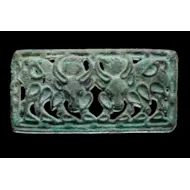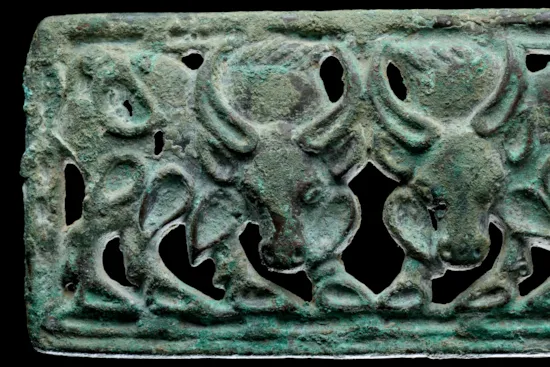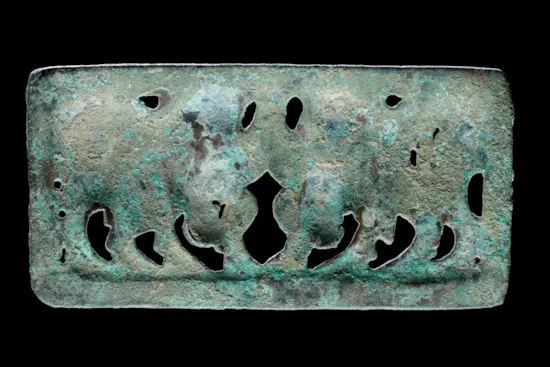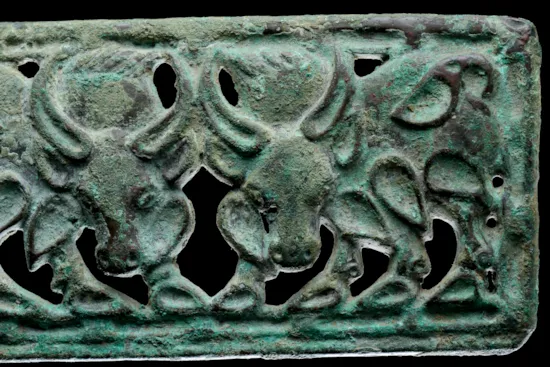Ancient South Siberian or North West Chinese Cast Openwork Bronze Belt Plaque
An Ancient South Siberian or North West Chinese Cast Openwork Bronze Belt Plaque Depicting Two Confronted Wild Yaks in the Hsiung-Nu Style
2nd - 1st Century B.C
Size: 5cm high, 11cm wide - 2 ins high, 4½ ins wide
2nd - 1st Century B.C
Size: 5cm high, 11cm wide - 2 ins high, 4½ ins wide
An Ancient South Siberian or North West Chinese Cast Openwork Bronze Belt Plaque Depicting Two Confronted Wild Yaks in the Hsiung-Nu Style
2nd - 1st Century B.C
Size: 5cm high, 11cm wide - 2 ins high, 4½ ins wide
2nd - 1st Century B.C
Size: 5cm high, 11cm wide - 2 ins high, 4½ ins wide
These bronze plaques were made by a lost wax process probably formed in a two piece mould, and several versions of this example have been found throughout North China, Mongolia and Southern Siberia. In fact wherever the Nomadic tribal confederation of the Xiongnu expanded their rule from the 3rd to the 1st century B.C in the eastern Eurasian Steppe. The Xiongnu or Hsiung-Nu tribes occupied the Ordos region within the great northwood loop of the Yellow River during the 2nd Century B.C and introduced into Chinese territory this variety of the Steppe nomad’s art, known as ‘animal style’.
Ex Hans Peter collection London
Ex Private UK collection acquired Eskenazi Ltd, June, 2003
cf: Metropolitan Museum, New York has a very similar plaque depicting ‘Confronted Bovines’ in the Eugene Victor Thaw Collection, catalogued as Southern Siberian, no. 113 pg. 139
Ex Private UK collection acquired Eskenazi Ltd, June, 2003
cf: Metropolitan Museum, New York has a very similar plaque depicting ‘Confronted Bovines’ in the Eugene Victor Thaw Collection, catalogued as Southern Siberian, no. 113 pg. 139
Ancient South Siberian or North West Chinese Cast Openwork Bronze Belt Plaque

SOLD









